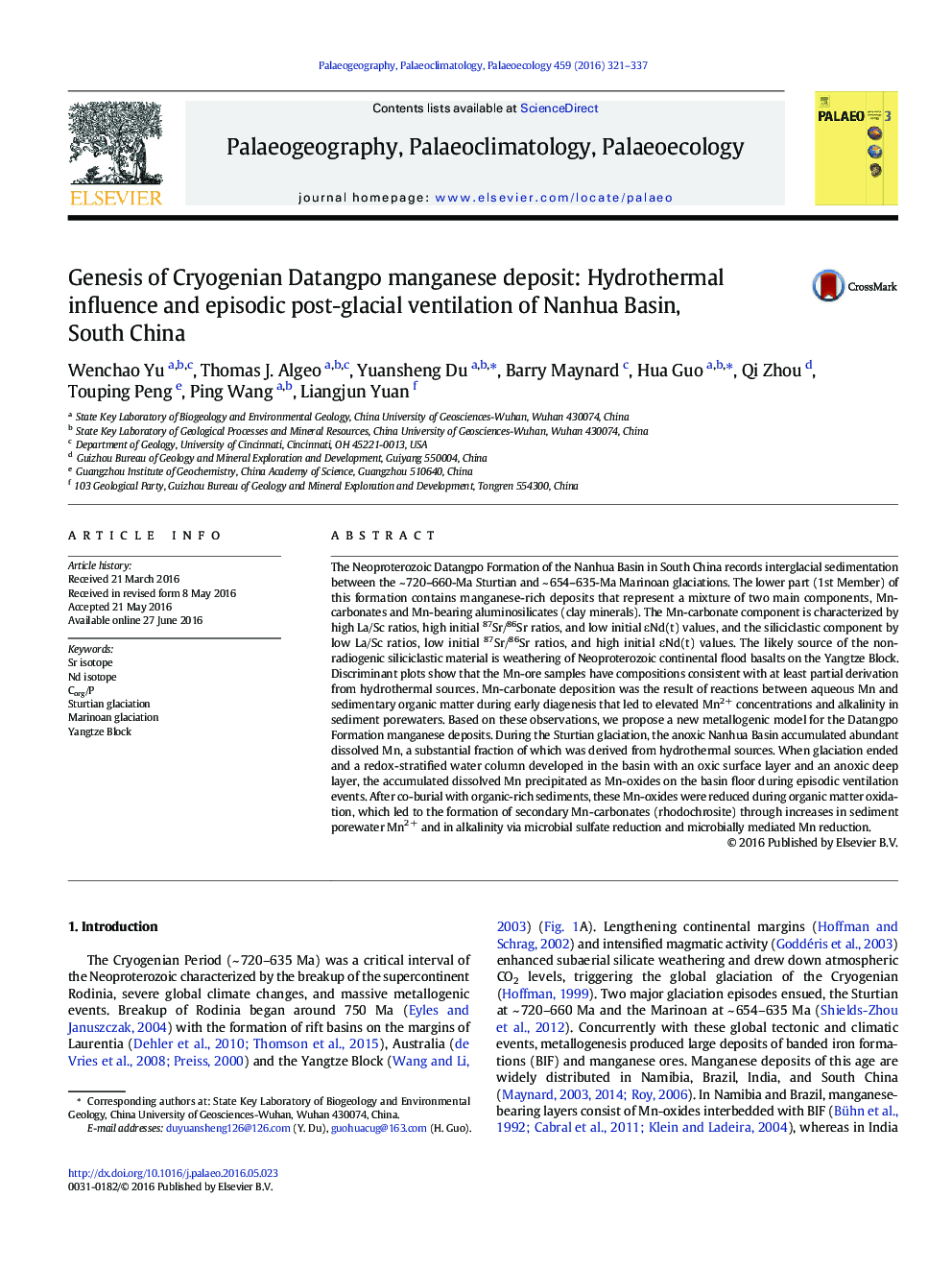| کد مقاله | کد نشریه | سال انتشار | مقاله انگلیسی | نسخه تمام متن |
|---|---|---|---|---|
| 4465639 | 1622132 | 2016 | 17 صفحه PDF | دانلود رایگان |

• New elemental and SrNd isotope data from Cryogenian Datangpo manganese deposit, Guizhou, China
• The two main components of the Mn-ore deposit are Mn-carbonates and Mn-bearing aluminosilicates.
• Mn-carbonates formed by reaction of hydrothermally sourced Mn and sedimentary organic matter
• Aluminosilicates derived from weathering of Neoproterozoic continental basalts on Yangtze Block
• The Datangpo Mn deposit conforms to the “episodic ventilation” model of metallogenesis.
The Neoproterozoic Datangpo Formation of the Nanhua Basin in South China records interglacial sedimentation between the ~ 720–660-Ma Sturtian and ~ 654–635-Ma Marinoan glaciations. The lower part (1st Member) of this formation contains manganese-rich deposits that represent a mixture of two main components, Mn-carbonates and Mn-bearing aluminosilicates (clay minerals). The Mn-carbonate component is characterized by high La/Sc ratios, high initial 87Sr/86Sr ratios, and low initial εNd(t) values, and the siliciclastic component by low La/Sc ratios, low initial 87Sr/86Sr ratios, and high initial εNd(t) values. The likely source of the non-radiogenic siliciclastic material is weathering of Neoproterozoic continental flood basalts on the Yangtze Block. Discriminant plots show that the Mn-ore samples have compositions consistent with at least partial derivation from hydrothermal sources. Mn-carbonate deposition was the result of reactions between aqueous Mn and sedimentary organic matter during early diagenesis that led to elevated Mn2 + concentrations and alkalinity in sediment porewaters. Based on these observations, we propose a new metallogenic model for the Datangpo Formation manganese deposits. During the Sturtian glaciation, the anoxic Nanhua Basin accumulated abundant dissolved Mn, a substantial fraction of which was derived from hydrothermal sources. When glaciation ended and a redox-stratified water column developed in the basin with an oxic surface layer and an anoxic deep layer, the accumulated dissolved Mn precipitated as Mn-oxides on the basin floor during episodic ventilation events. After co-burial with organic-rich sediments, these Mn-oxides were reduced during organic matter oxidation, which led to the formation of secondary Mn-carbonates (rhodochrosite) through increases in sediment porewater Mn2 + and in alkalinity via microbial sulfate reduction and microbially mediated Mn reduction.
Journal: Palaeogeography, Palaeoclimatology, Palaeoecology - Volume 459, 1 October 2016, Pages 321–337